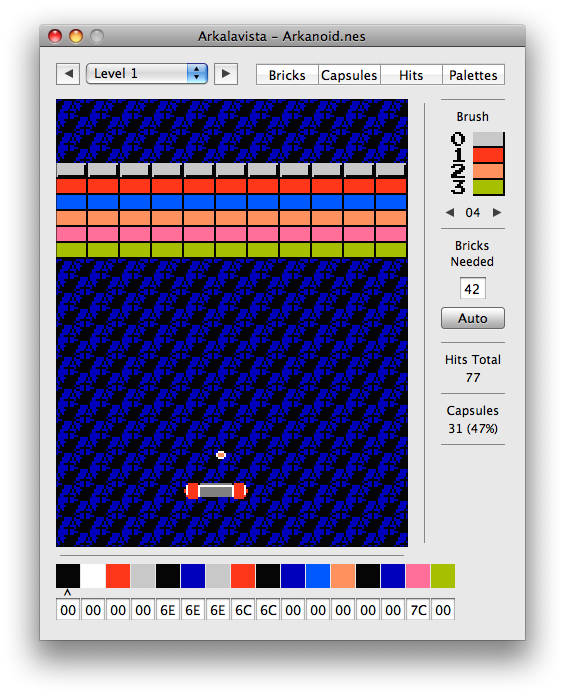 |
|



 Main
| FAQ
| Uploader
| IRC chat
| Radio
| Memberlist
| Active users
| Latest posts
| Calendar
| Stats
| Online users
| Search
Main
| FAQ
| Uploader
| IRC chat
| Radio
| Memberlist
| Active users
| Latest posts
| Calendar
| Stats
| Online users
| Search
| |||
| Views: 88,438,441 |
    Main
| FAQ
| Uploader
| IRC chat
| Radio
| Memberlist
| Active users
| Latest posts
| Calendar
| Stats
| Online users
| Search
Main
| FAQ
| Uploader
| IRC chat
| Radio
| Memberlist
| Active users
| Latest posts
| Calendar
| Stats
| Online users
| Search
|
04-19-24 08:41 PM |
|
| Guest: Register | Login | |||
| 0 users currently in ROM Hacking Related Releases | 2 guests | 1 bot |
| Main - ROM Hacking Related Releases - Arkalavista 1.0 | New thread | New reply |
| Trax |
| ||
 Yellow Stalfos Level: 71 Posts: 353/1145 EXP: 3034165 Next: 132949 Since: 07-06-07 From: Québec Last post: 3620 days Last view: 2872 days |
I think the coolest thing with this app is that it bears a name that has yet to appear on the Internet. Well, now it is, because Google updated the indexation of my site and this board...
That aside, I think it resolves a couple of issues, especially the weird palette mappings. Total hits and total capsules functions help keeping track of the difficulty of the level. The backgrounds draw correctly, but the palette used is hard-coded to 1. In fact, the background that appears under a newly destroyed brick has the same palette as the brick itself. That's why you need redundant colors in the 4 palettes if you don't want weird colors to appear when you destroy bricks... I think I came up with a good interface for laying out bricks. You have a brush that shows what the brick will look like with each of the 4 palettes, and arrows to select the type. Select type 0 to erase bricks. You can always right click a brick to change the brush to that brick's type. This is done when no mode is selected. All other modes work using the principle of left-click to decrease and right-click to increase... If you activate the "Auto" button, the number of bricks needed is automatically calculated as you edit the levels. You can change the number to anything lower if you want, by deactivating the "Auto" button... 
Download Arkalavista 1.0 Any comments are welcome. And if anyone wants the source code, just email me... |
| blackhole89 |
| ||
 The Guardian Moloch whose eyes are a thousand blind windows! Level: 124 Posts: 1699/4196 EXP: 21521630 Next: 314971 Since: 02-19-07 From: Ithaca, NY, US Last post: 464 days Last view: 77 days |
|
| Ailure |
| ||
|
Hats Steam Board2 group Level: 121 Posts: 2877/3965 EXP: 19768721 Next: 287975 Since: 02-19-07 From: Sweden, Skåne Last post: 3295 days Last view: 2045 days |
It's a shame that almost no ROM hacking development is multi-platform. >> ____________________ AIM: gamefreak1337, MSN: Emil_sim@spray.se, XMPP: ailure@xmpp.kafuka.org
|
| Trax |
| ||
 Yellow Stalfos Level: 71 Posts: 354/1145 EXP: 3034165 Next: 132949 Since: 07-06-07 From: Québec Last post: 3620 days Last view: 2872 days |
Most of the inner works is done, expectedly, using Standard C. Anything that is graphical sits on Cocoa, which is a huge set of libraries that use SmallTalk style Objective-C. As for X11 and Qt, I don't know a lot about them, but if you can handle matrixes, buttons and text fields, that is all you need to recreate the interface...
The main view is a matrix of cells the size of a single brick. A cell is simply a control that draws something to the screen, an image object, a text string, etc. The way I draw with all my ROM hacking apps is via image objects that manage a set of bitmap data. There's no pixel-wise painting occuring. I made a set of functions in which you feed an offset (unsigned int) of the ROM data object and a palette (4-member array of a color struct) that return an image object. If needed, I compose bigger images using single 8x8 pixels images. Those objects are composited in the matrix view as needed, either by assigning the image to one of its cells, or drawing directly in the view... The colors palette is a matrix of buttons with a background color and no title. When you click on them, a window appears with all the colors. At the bottom is a matrix of text fields. When you press return, they send a message to update the variables, recreate the images if necessary and redraw the matrix... The way the matrix redraws itself depends upon the mode selected, which is stored in an instance variable. It's just a switch statement. The matrix is always redrawn normally, and then the various modes add other things on top of it... |
| Mega-Dog |
| |||||||||||||||||||||
|
Red Goomba Level: 16 Posts: 12/37 EXP: 17281 Next: 2975 Since: 02-27-08 From: Minnesota Last post: 1040 days Last view: 770 days |
|
|||||||||||||||||||||
| Main - ROM Hacking Related Releases - Arkalavista 1.0 | New thread | New reply |
© 2005-2023 Acmlm, blackhole89, Xkeeper et al. |
|
MySQL - queries: 47, rows: 63/63, time: 0.015 seconds. |